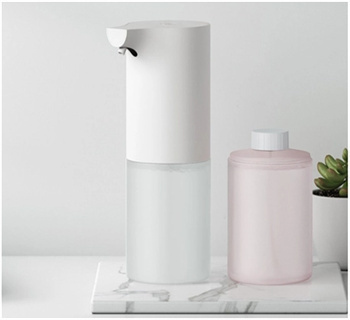Overview of Coco Alkylbis(hydroxyethyl)methyl Ethoxylated Chlorides
Coco alkyl bis (hydroxyethyl)methyl ethoxylated chlorides are a class of surfactants that combine the properties of both nonionic and anionic surfactants. Derived from coconut oil, they offer a unique blend of biocompatibility, stability, and surfactant activity. These compounds find widespread applications in the personal care, household cleaning, and industrial processing industries. With their ability to reduce surface tension and stabilize emulsions, coco alkyl bis (hydroxyethyl)methyl ethoxylated chlorides play a crucial role in enhancing the performance of numerous products.
Characteristics of Coco Alkylbis(hydroxyethyl)methyl Ethoxylated Chlorides
Biocompatibility: Derived from coconut oil, these surfactants are highly compatible with natural skin and hair, making them suitable for use in personal care products.
Excellent Surfactant Properties: They exhibit strong surfactant activity, effectively reducing surface tension and enhancing wetting and spreading.
Stability: Coco alkyl bis (hydroxyethyl)methyl ethoxylated chlorides offer excellent stability, resisting degradation even under harsh conditions.
Emulsifying Ability: These surfactants effectively emulsify oil and water mixtures, stabilizing emulsions and dispersions.
Versatility: Due to their unique properties, coco alkyl bis (hydroxyethyl)methyl ethoxylated chlorides can be used in various applications, from personal care to industrial processing.
Application of Coco Alkylbis(hydroxyethyl)methyl Ethoxylated Chlorides
Personal Care Products: These surfactants are commonly used in shampoos, conditioners, soaps, and other personal care products, where they contribute to foaminess, emulsification, and stability.

Personal Care Products
Household Cleaners: Coco alkyl bis (hydroxyethyl)methyl ethoxylated chlorides enhance the cleaning power of household detergents and dishwashing liquids by emulsifying grease and oil.

Household Cleaners
Textile Processing: They are used in textile processing to improve dyeing and finishing, ensuring uniform distribution of dyes and finishes on fabrics.

Textile Processing
Paints and Coatings: These surfactants improve the wetting and spreading of paints and coatings, ensuring smooth and uniform coverage.

Paints and Coatings
Oilfield Chemicals: Coco alkyl bis (hydroxyethyl)methyl ethoxylated chlorides are used in oilfield chemicals to emulsify and stabilize oil-water mixtures, facilitating their transportation and processing.

Oilfield Chemicals

Company Profile
NANOTRUN(www.rboschco.com) is a trusted global chemical material supplier & manufacturer with over 12-year-experience in providing super high-quality chemicals and nanomaterials, including boride powder, nitride powder, graphite powder, sulfide powder, 3D printing powder, etc.
The company has a professional technical department and Quality Supervision Department, a well-equipped laboratory, and equipped with advanced testing equipment and after-sales customer service center.
If you are looking for high-quality Coco alkyl bis (hydroxyethyl)methyl ethoxylated chlorides, please feel free to contact us or click on the needed products to send an inquiry.
Payment Term
L/C, T/T, Western Union, Paypal, Credit Card etc.

Shipment Term
By sea, by air, by express, as customers request.
FAQ
Are coco alkyl bis (hydroxyethyl)methyl ethoxylated chlorides safe?
Re: Yes, coco alkyl bis (hydroxyethyl)methyl ethoxylated chlorides are generally safe for use by the manufacturer's recommendations and when properly incorporated into formulated products. However, as with any chemical, handling them cautiously and following safety measures is important.
What are the benefits of using coco alkyl bis (hydroxyethyl)methyl ethoxylated chlorides?
Re: The benefits of using coco alkyl bis (hydroxyethyl)methyl ethoxylated chlorides include their biocompatibility, surfactant properties, emulsifying ability, and stability. These surfactants effectively reduce surface tension, emulsify oil and water mixtures, and enhance the performance of formulated products in various applications.
How are coco alkyl bis (hydroxyethyl)methyl ethoxylated chlorides produced?
Re: Coco alkyl bis (hydroxyethyl)methyl ethoxylated chlorides are produced through chemical reactions, including ethoxylation and chlorination. Coconut oil first reacts with ethylene oxide to introduce ethoxylation groups, followed by chlorination to introduce the chloride moieties. The resulting product is then purified and used in various applications.
What are the storage requirements for coco alkyl bis (hydroxyethyl)methyl ethoxylated chlorides?
Re: Coco alkyl bis (hydroxyethyl)methyl ethoxylated chlorides should be saved in amazing, dry, well-ventilated locations, safeguarded from straight sunlight and dampness. They should be kept in snugly sealed containers to stop exposure to air and humidity, which could affect their stability. Additionally, it is important to follow the manufacturer's recommendations for storage and handling to ensure product safety and performance.
Are coco alkyl bis (hydroxyethyl)methyl ethoxylated chlorides suitable for food processing?
Re: Coco alkyl bis(hydroxyethyl)methyl ethoxylated chlorides are not typically used in food processing due to their
Coco alkylbis(hydroxyethyl)methyl Ethoxylated Chlorides CAS 61791-10-4 Properties | |
| Other Names | N/A |
| CAS No. | N/A |
| Compound Formula | N/A |
| Molecular Weight | N/A |
| Appearance | NA |
| Melting Point | N/A |
| Boiling Point | N/A |
| Density | N/A |
| Solubility in H2O | N/A |
| Exact Mass | N/A |
Coco alkylbis(hydroxyethyl)methyl Ethoxylated Chlorides CAS 61791-10-4 Health & Safety Information | |
| Signal Word | N/A |
| Hazard Statements | N/A |
| Hazard Codes | N/A |
| Risk Codes | N/A |
| Safety Statements | N/A |
| Transport Information | N/A |




